#dayton duncan
Explore tagged Tumblr posts
Text
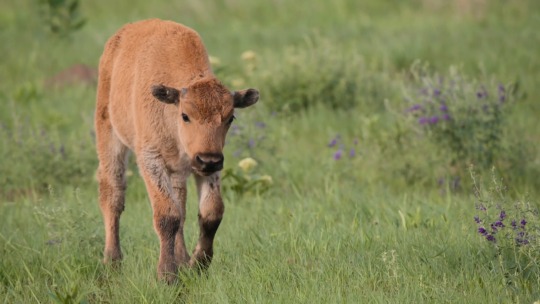


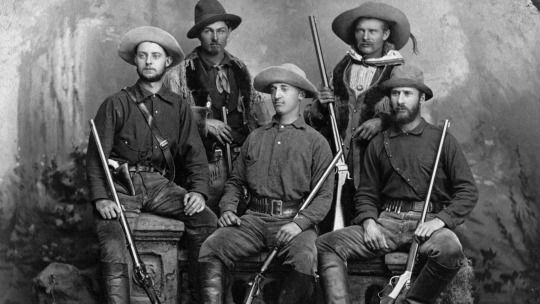
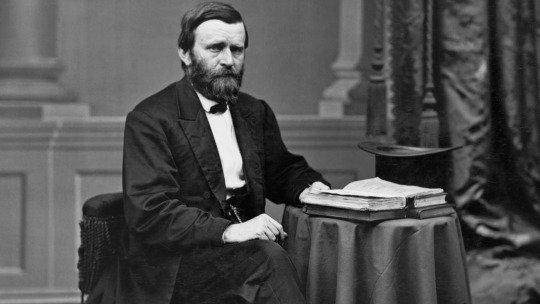
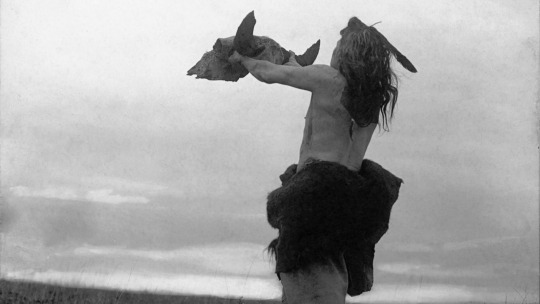


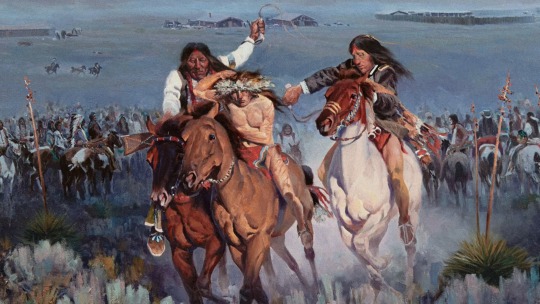
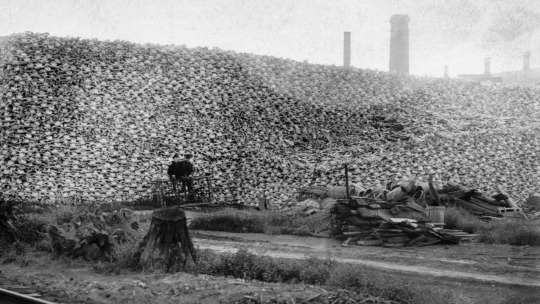
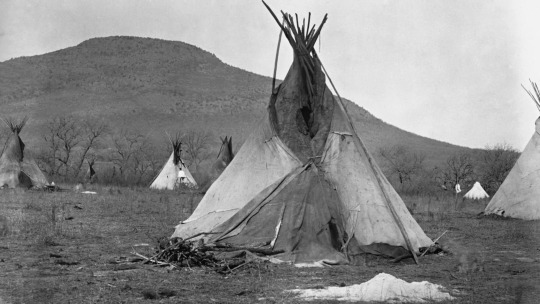
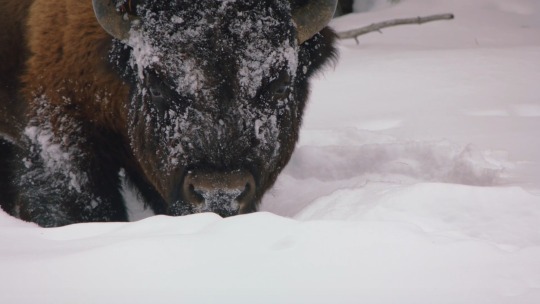
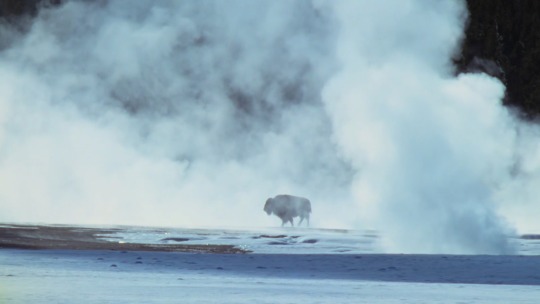
THE AMERICAN BUFFALO (2023; dir. Ken Burns and Dayton Duncan)
Episode One: “Blood Memory”
There is no story anywhere in world history that involves as large a destruction of wild animals as happened in North America – in the Western United States in particular –between 1800 and 1890.
– Dan Flores, American cultural and environmental historian
A cold wind blew across the prairie when the last buffalo fell... A death wind for my people.
– Sitting Bull, Hunkpapa Lakota leader
We have seen the Indian and the game retreat before the white man and the cattle, and beheld the tide of settlement move forward, which threatens before long to leave no portion of our vast territory unbroken by the farmer's plow or untrodden by his flocks. There is one spot left: a single rock about which this tide will break, and past which it will sweep, leaving it undefiled by the unsightly traces of civilization. Here in this Yellowstone Park, the large game of the West will be preserved from extermination in this, their last refuge.
– George Bird Grinnell, American conservationist and anthropologist
#The American Buffalo#Ken Burns#Dayton Duncan#bison#American bison#American Indians#Native Americans#Indigenous Americans#Lakota#United States#Wyoming#Standing Rock#Dan Flores#Sitting Bull#George Bird Grinnell#Ulysses S. Grant#Yellowstone#National Park Service#NPS#PBS
6 notes
·
View notes
Text
Une histoire populaire des Etats-Unis
2266. Country Music, Ken Burns (Ken Burns, Country Music, 2019) (PBS) (Arte)
⌘ Wiki ⌘ Arte - — jusqu'au 29/10/2024
⌘ Ken Burns ⌘
⌘ UNUM
5 notes
·
View notes
Text

Country Music: An Illustrated History
A gorgeously illustrated and hugely entertaining story of America's most popular music and the singers and songwriters who captivated, entertained, and consoled listeners throughout the twentieth century—based on the eight-part film series. This fascinating history begins where country music itself emerged: the American South, where people sang to themselves and to their families at home and in church, and where they danced to fiddle tunes on Saturday nights. With the birth of radio in the 1920s, the songs moved from small towns, mountain hollers, and the wide-open West to become the music of an entire nation--a diverse range of sounds and styles from honky tonk to gospel to bluegrass to rockabilly, leading up through the decades to the music's massive commercial success today. But above all, Country Music is the story of the musicians. Here is Hank Williams's tragic honky-tonk life, Dolly Parton rising to fame from a dirt-poor childhood, and Loretta Lynn turning her experiences into songs that spoke to women everywhere. Here too are interviews with the genre's biggest stars, including the likes of Merle Haggard to Garth Brooks to Rosanne Cash. Rife with rare photographs and endlessly fascinating anecdotes, the stories in this sweeping yet intimate history will captivate longtime country fans and introduce new listeners to an extraordinary body of music that lies at the very center of the American experience.
1 note
·
View note
Text

#blood memory#the tragic decline and improbable resurrection of the american buffalo#bison#ken burns#dayton duncan
0 notes
Text
Explore the history of a uniquely American art form: country music. From its deep and tangled roots in ballads, blues and hymns performed in small settings, to its worldwide popularity, learn how country music evolved over the course of the 20th century, as it eventually emerged to become America’s music.
Country Music features never-before-seen footage and photographs, plus interviews with more than 80 country music artists. The eight-part 16-hour series is directed and produced by Ken Burns; written and produced by Dayton Duncan; and produced by Julie Dunfey.
1 note
·
View note
Text

0 notes
Photo

Siege of Detroit
The Siege of Detroit (15-16 August 1812) was one of the first major actions of the War of 1812. After a botched invasion of Canada, a US army retreated to Fort Detroit, where it was besieged by British and Native American forces under Major General Isaac Brock and Shawnee chieftain Tecumseh. The Americans quickly capitulated, leaving Detroit in British hands.
Background: March to Detroit
By April 1812, war between the United States and the United Kingdom seemed just over the horizon. On the high seas, British warships had been boarding American merchantmen and impressing American sailors with impunity, while on the northwestern frontier, British agents were believed to be aiding two Shawnee brothers, Tecumseh and the Prophet, in their attempt to form a Native American confederacy and resist US encroachment onto their hunting grounds. In Congress, a clique of belligerent, newly-elected representatives – called 'War Hawks' – clamored for war, despite the reluctance of the general population and the underpreparedness of the military. To prepare for a conflict that seemed increasingly likely, the administration of President James Madison looked to shore up defenses in the northwest, where the US shared a border with British-controlled Canada.
As part of this plan, the Madison administration ordered a new army to be raised in the Michigan Territory and then marched to the outpost of Fort Detroit. William Hull, the 59-year-old governor of the Michigan Territory, was commissioned as a brigadier general and offered the command. Hull, a veteran of the American Revolutionary War, was reluctant to accept – he had, after all, recently suffered a stroke – but his fear of an increase in Native American attacks against Michigan settlers led him to take the command. On 25 May, Hull arrived in Dayton, Ohio, where his makeshift army was being assembled, and was dismayed at what he found. The volunteers were noisy and undisciplined, lacking adequate arms or powder. Organized into three militia regiments, the volunteers insisted on electing their own officers. As such, the men they selected as colonels – Duncan McArthur, James Findlay, and Lewis Cass – were all either politicians or aspiring politicians, men with no military experience.
After a botched army inspection in which Hull was nearly flung from his horse, the army of Ohio volunteers set out on 1 June. Proceeding at a slow pace, they reached the frontier community of Urbana ten days later, where they were joined by Lt. Colonel James Miller and a regiment of regulars, the 4th US Infantry. At Urbana, some of Hull's volunteers refused to go any further, claiming that they had not received the full pay that had been promised to them. Though they were eventually prodded along by Miller's regulars, it was not a promising start. A few days later another incident took place when one militiaman, drunk on moonshine, was startled by a noise in the dark and shot one of his fellow sentries. The man was promptly court-martialed and given the "grotesque sentence" of having his ears cropped and each cheek branded (Berton, 94). The army then marched into the Great Black Swamp, northwest of Ohio, where incessant rainfalls had overflown streams and turned the ground to mud. Meanwhile, they were, unbeknownst to them, being closely watched by Tecumseh's scouts, hiding amongst the trees.
On 26 June, Hull received a letter from the US Secretary of War dated 18 June, warning him that war was imminent and ordering him to get to Detroit "with all possible speed". On 1 July, Hull reached the mouth of the Maumee River where he hired the schooner Cuyahoga and loaded it with anything that was slowing the army down, including his personal dispatches, officers' baggage, extra uniforms, medical supplies, and around 30 sick men. The Cuyahoga then sailed into Lake Erie to transport the supplies to Detroit. The next day, Hull received a second letter from Washington, also dated 18 June, informing him that war had been declared, but it was too late to recall the schooner. As it attempted to enter the Detroit River, the Cuyahoga, carrying Hull's dispatches, was captured by a Canadian vessel. On 5 July, Hull finally reached Detroit, where he was joined by several companies of Michigan militia, bringing his total number to about 2,500 men. Hull, whose army was running dangerously low on supplies, had hoped to find food in Detroit but was disappointed.
Continue reading...
30 notes
·
View notes
Text

STARTING WITH D

MASCULINE︰ d'arcy. dacery. dacre. daiclen. dakota. dale. daley. dallas. dalton. daly. damian. damien. damion. damon. dan. dana. dane. dangelo. daniel. daniel.. dannie. danny. dante. darby. darcy. darden. darell. daren. darian. dariel. darien. darin. dario. darion. darius. darnell. darrell. darren. darrin. darryl. darwin. daryl. dash. dashie. dave. davey. david. davie. davin. davis. davy. dawson. dax. daxton. dayton. deacon. dean. declan. dederick. dee. deemer. deforest. deforrest. delano. delbert. dell. delmar. delroy. den. dene. denholm. denis. dennis. denny. denton. denver. denzel. denzil. deon. derby. derek. derick. derren. derrick. derryl. deryck. des. desi. desmond. devan. deven. devereux. devin. devon. devyn. dewayne. dewey. dex. dexter. dezi. diego. digby. diggory. dillan. dillon. dion. dior. dirk. dixon. dolph. dom. domenic. dominic. dominick. don. donald. donavon. donnie. donny. donovan. doran. dorian. doug. douglas. douglass. doyle. draiden. drake. dre. drew. driscoll. driskoll. drogo. drummond. duane. dudley. duke. duncan. dunstan. durward. dustin. dusty. dwain. dwayne. dwight. dylan. dyson.

FEMININE︰ d'arcy. daffodil. dahlia. daisy. dakota. dalary. dale. dalett. daley. daleyza. dalia. dalilah. dallas. daly. dana. danette. dani. dania. danica. daniela. daniella. danielle. danika. danita. danna. danni. dannie. daphne. darby. darcey. darcie. darcy. daria. darian. darla. darleen. darlene. darley. davena. davida. davina. davinia. dawn. dayana. dayla. daylin. dayna. deana. deanna. deanne. deb. debbi. debbie. debby. debi. deborah. debra. dee. deeann. deedee. deena. deidra. deidre. deirdre. deitra. delaney. delia. delice. delicia. delight. delilah. delina. delissa. dell. della. delma. delora. delores. deloris. delphia. delta. demelza. demetria. demi. dena. dene. denice. denise. denver. deonne. derby. desi. desirae. desiree. dessa. destinee. destiny. detta. devyn. dezi. deziree. di. diamond. diana. diane. diann. dianna. dianne. diantha. dillin. dina. dinah. dione. dionne. dior. dixie. docia. dodie. dollie. dolly. dolores. dominica. dona. donelle. donna. dora. dorean. doreen. doretta. doria. dorinda. doris. dorothea. dorothy. dorris. dortha. dorthy. dory. dot. dottie. dotty. dove. drea. dream. dreda. drew. drina. driona. duana. dulce. dulcibella. dulcie. dusty. dyan. dylan.

NEUTRAL︰ daelyn. daelynn. dailyn. daine. daisy. dakoda. dakota. dakotah. dale. dallas. damani. damian. damoni. dana. dance. dani. danni. danny. dany. dara. darby. darcy. dare. darkling. dash. date. davey. davi. dawn. dawson. dawsyn. dax. day. daybreak. daylight. daylin. dayton. deal. deck. declares. dee. deer. deklyn. delani. dell. delta. demon. dempsey. denali. deni. denial. denim. denis. denny. dent. denver. deputy. descendance. design. desire. destiny. devan. devil. devin. devon. devyn. dew. diamond. diary. diesel. dillan. dillon. dio. dion. dior. dire. distance. diva. divine. doll. dominic. dominique. domino. doom. dot. double. doubt. dove. dragon. drake. drama. dream. drew. drift. drip. driver. dru. dual. duel. duke. dune. duo. dusty. dutton. dylan. dynamite. dynasty.

9 notes
·
View notes
Text
youtube
Official website: https://to.pbs.org/buffalo | #AmericanBuffaloPBS
Follow Jason Baldes, an Eastern Shoshone and a member of the InterTribal Buffalo Council, as he leads historic transfers of bison to Indigenous communities which will maintain their herds to supply a healthy food source and cultural touchstone for their tribal citizens. The film explores what living among the bison once again means for Native people—today and for future generations.
This program is made possible by viewers like you. Support your local PBS station: https://www.pbs.org/donate
Subscribe to the PBS channel for more clips:
/ pbs
Enjoy full episodes of your favorite PBS shows anytime, anywhere with the free PBS App: https://to.pbs.org/2QbtzhR
FOLLOW US:
Facebook: / pbs
Twitter: / pbs
Instagram: / pbs
TikTok: / pbs
Shop: https://shop.pbs.org/
#buffalo #bison #nativeamericans
HOMECOMING
Examine how the InterTribal Buffalo Council’s Bison Conservation and Transfer Program is supporting buffalo restoration to the Indigenous people whose lives, spiritually and physically, were inextricably linked to the bison for thousands of years. HOMECOMING is directed and produced by Julianna Brannum. Executive Produced by Ken Burns. Edited by Matt Leach. Music by Kevin Hoetger and Kyle Crusham. Cinematography by Jared Ames, Brittan Bendabout, Charles Elmore, Lindsay Jackson, and Buddy Squires, ASC. Audio by David Griesinger and Royce Sharp. The film advisors were Julie Dunfey, Dayton Duncan and Craig Mellish.
#pbs#solarpunk#buffalo#american buffalo#american bison#native american#indigenous#Jason Baldes#Eastern Shoshone#InterTribal Buffalo Council#wyoming#colorado#wisconsin#USA#Youtube
6 notes
·
View notes
Text
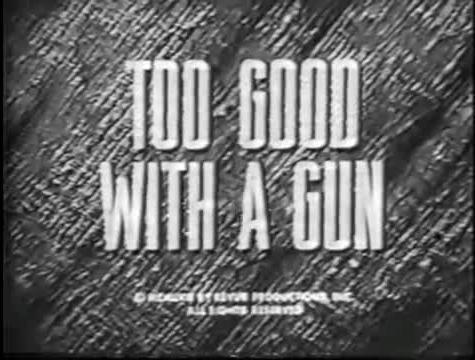
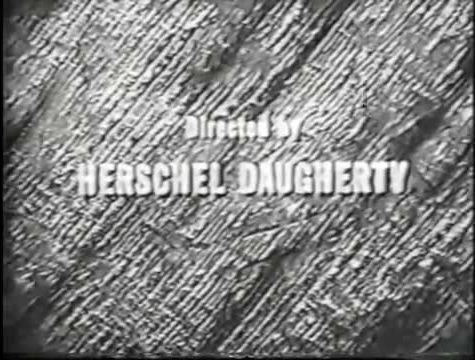
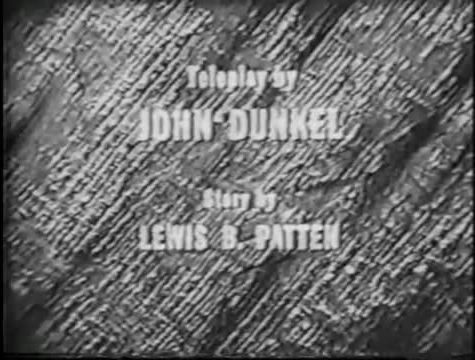
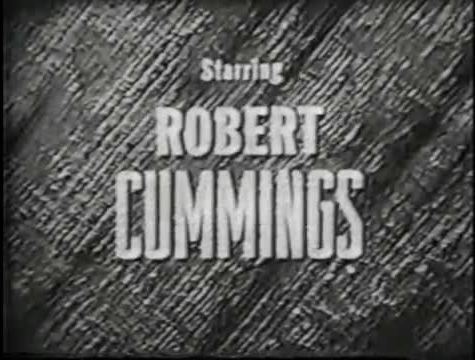
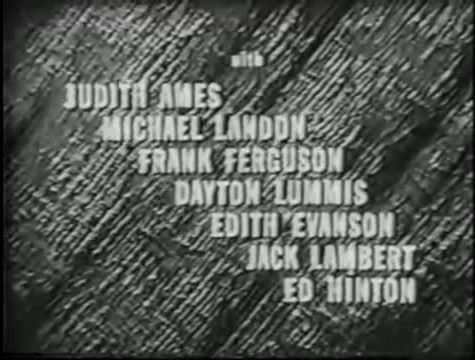
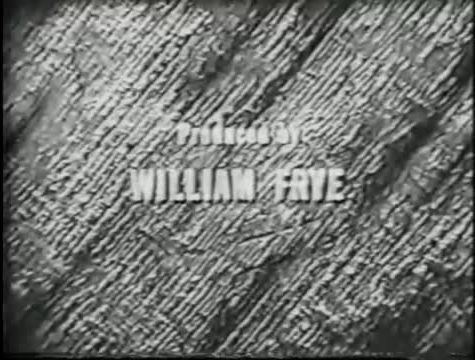

From the Golden Age of Television
Too Good With a Gun - CBS - March 24, 1957
A presentation of "General Electric Theater" Season 5 Episode 27
Western Drama
Running Time: 30 minutes
Hosted by Ronald Reagan
Stars:
Robert Cummings as Russ Baker
Rachel Ames as Edie Duncan (Billed as Judith Ames)
Michael Landon as Claude Duncan
Frank Ferguson as Mack Duncan
Dayton Lummis as Arnold Hoffman
Edith Evanson as Ma Duncan
Jack Lambert as Slick Everett
Ed Hinton as Big Nick
#Too Good With a Gun#TV#General Electric Theater#Western#Drama#1957#Ronald Reagan#Robert Cummings#CBS
4 notes
·
View notes
Text

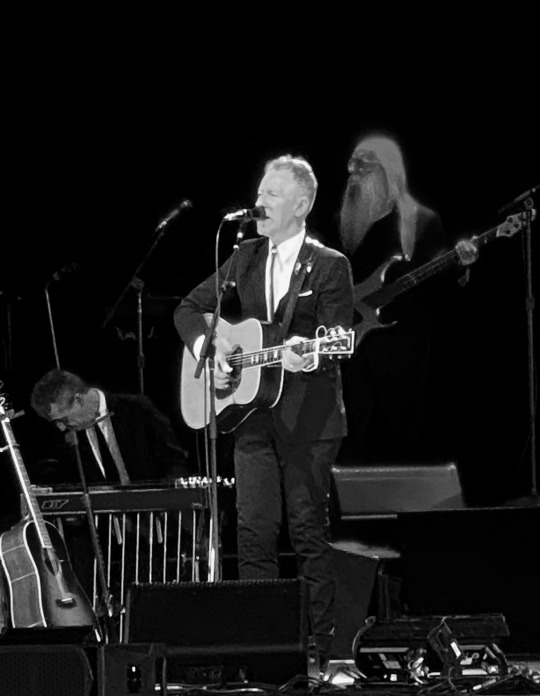
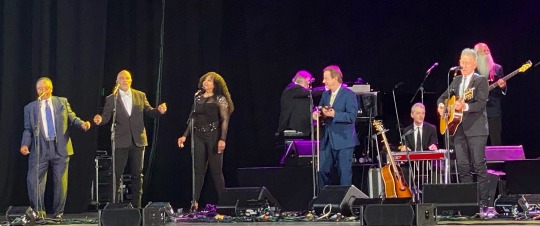
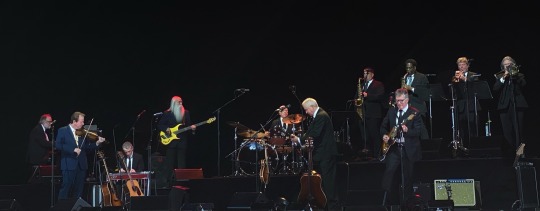
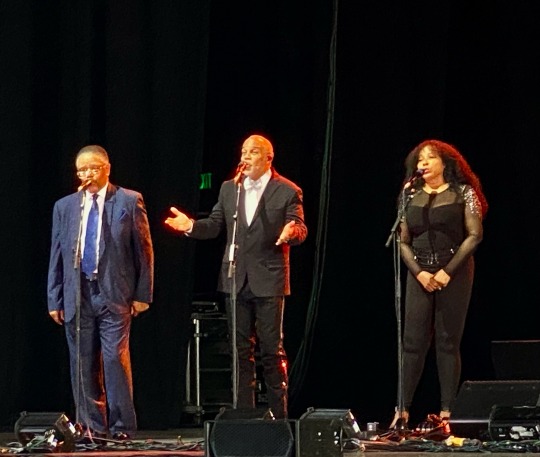
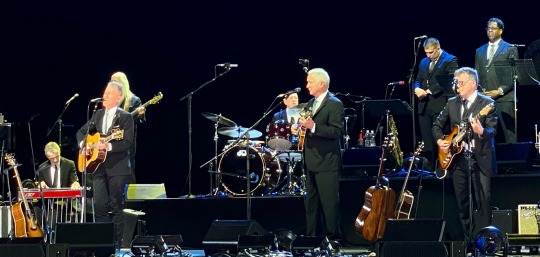

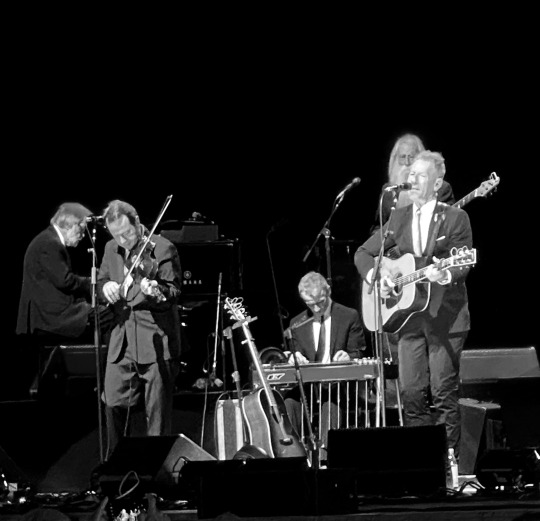


Lyle Lovett and His Large Band at Rose Music Center at the Heights, Huber Heights, Ohio, July 26, 2023
It was 90 degrees at 7:45 in the evening of July 26 when Lyle Lovett and His Large Band took the stage dressed in black-tie formal wear and turned up the heat further as they declared, “It’s a Naked Party.”
“We’re happy for this cool weather” Lovett said later in the evening without irony, noting he lives in Texas, where a crushing heat wave has lingered for weeks.
Acclamation notwithstanding, clothing-optional might have been the way to go. But Lovett - who also performed “Pants is Overrated,” inspired by his kids’ refusal to get dressed - and his band were hosting a soiree.
After the aural nudity, Lovett and his three singers exited the stage to leave the remaining 11 members - four pieces of brass; acoustic, electric and pedal steel guitars; Jim Cox’s piano; Stuart Duncan’s violin; and the rhythm section of Leland Sklar and Russ Kunkel, who employed sticks, brushes, mallets and his hands during the show - to strut their big-band stuff on “The Blues Walk,” the only instrumental of the evening.
The band was back at full strength as Lovett threw his head back and held notes for inhuman lengths on a purely country-and-western reading of “Stand by Your Man.”
And so it went for two-and-three-quarters hours at Rose Music Center in suburban Dayton, Ohio, as Lovett and his multi-genre band played comedic soul on “She’s No Lady,” ballroom balladry on “Are We Dancing,” blues on “Pig Meat Man,” gospel on the hand-clapping, choir-singing “Church” and virtually every other style of American music as ragtime, Dixieland, bluegrass and more popped up across the band’s many improvisational interludes.
Less witty than usual, Lovett instead dedicated his between-song banter to speaking with his onstage compatriots and detailing their musical backgrounds. He repeatedly remarked on how lucky is is to play with them. And he is correct.
With 15 players and singers on stage at any given time, train wrecks might be expected. But these are big-shot studio and touring musicians - and in the case of the horn section, college professors of music - and their execution was flawless. This is how steel-guitar comes to sound right at home inside big-band jazz. It’s the reason six-string, fiddle, steel and vocal showcases can fit inside a song like the swaggering “My Baby Don’t Tolerate” and not come off as self-indulgent. And it’s why the seven piece that performed the Chieftains’ arrangement of “Don’t Let Your Deal Go Down” packed every bit of power as did the full ensemble that had the audience shaking it in the proverbial steam bath on “That’s Right (You’re Not from Texas).”
Lovett is a musical chameleon and a craftsman committed to quality. So, despite often playing small houses, selling fewer than half of the Rose’s 4,200 seats and proving on such tender ballads as “12th of June” and “The Queen of Know,” that the core band is capable of breathtakingly gorgeous three- and four-part harmony, he spends heavily on salaries so fans may delight in his choir’s bass-to-gospel, doo-wop-to-barbershop stylings.
Grade card: Lyle Lovett and His Large Band at Rose Music Center - 7/26/23
See more photos on Sound Bites’ Facebook page.
7/27/23
5 notes
·
View notes
Photo




Book Recommendations: Earth Day
Guardians of the Valley by Dean King
In June of 1889 in San Francisco, John Muir—iconic environmentalist, writer, and philosopher—meets face-to-face for the first time with his longtime editor Robert Underwood Johnson, an elegant and influential figure at The Century magazine. Before long, the pair, opposites in many ways, decide to venture to Yosemite Valley, the magnificent site where twenty years earlier, Muir experienced a personal and spiritual awakening that would set the course of the rest of his life.
Upon their arrival the men are confronted with a shocking vision, as predatory mining, tourism, and logging industries have plundered and defaced “the grandest of all the special temples of Nature.” While Muir is consumed by grief, Johnson, a champion of society’s most pressing debates via the pages of the nation’s most prestigious magazine, decides that he and Muir must fight back. The pact they form marks a watershed moment, leading to the creation of Yosemite National Park, and launching an environmental battle that captivates the nation and ushers in the beginning of the American environmental movement.
Nature’s Best Hope by Douglas W. Tallamy
Douglas W. Tallamy’s first book, Bringing Nature Home, sparked a national conversation about the link between healthy local ecosystems and human well-being. In Nature's Best Hope, he takes the next step and outlines his vision for a grassroots, home-grown approach to conservation.
Nature's Best Hope advocates for homeowners everywhere to turn their yards into conservation corridors that provide wildlife habitats. This home-based approach doesn’t rely on the federal government and protects the environment from the whims of politics. It is also easy to do, and readers will walk away with specific suggestions they can incorporate into their own yards.
Nature's Best Hope is nature writing at its best—rooted in history, progressive in its advocacy, and above all, actionable and hopeful. By proposing practical measures that ordinary people can easily do, Tallamy gives us reason to believe that the planet can be preserved for future generations.
The National Parks by Dayton Duncan
America’s national parks spring from an idea as radical as the Declaration of Independence: that the nation’s most magnificent and sacred places should be preserved, not for royalty or the rich, but for everyone. In this evocative and lavishly illustrated narrative, Ken Burns and Dayton Duncan delve into the history of the park idea, from the first sighting by white men in 1851 of the valley that would become Yosemite and the creation of the world’s first national park at Yellowstone in 1872, through the most recent additions to a system that now encompasses nearly four hundred sites and 84 million acres.
The authors recount the adventures, mythmaking, and intense political battles behind the evolution of the park system, and the enduring ideals that fostered its growth. They capture the importance and splendors of the individual parks: from Haleakala in Hawaii to Acadia in Maine, from Denali in Alaska to the Everglades in Florida, from Glacier in Montana to Big Bend in Texas. And they introduce us to a diverse cast of compelling characters—both unsung heroes and famous figures such as John Muir, Theodore Roosevelt, and Ansel Adams—who have been transformed by these special places and committed themselves to saving them from destruction so that the rest of us could be transformed as well.
Climate Justice by Mary Robinson
Holding her first grandchild in her arms in 2003, Mary Robinson was struck by the uncertainty of the world he had been born into. Before his fiftieth birthday, he would share the planet with more than nine billion people--people battling for food, water, and shelter in an increasingly volatile climate. The faceless, shadowy menace of climate change had become, in an instant, deeply personal.
Mary Robinson's mission would lead her all over the world, from Malawi to Mongolia, and to a heartening revelation: that an irrepressible driving force in the battle for climate justice could be found at the grassroots level, mainly among women, many of them mothers and grandmothers like herself. From Sharon Hanshaw, the Mississippi matriarch whose campaign began in her East Biloxi hair salon and culminated in her speaking at the United Nations, to Constance Okollet, a small farmer who transformed the fortunes of her ailing community in rural Uganda, Robinson met with ordinary people whose resilience and ingenuity had already unlocked extraordinary change.
#earth day#nature#science#conservation#Environment#nonfiction#nonfiction books#Nonfiction Reading#nonfiction reads#Library Books#Book Recommendations#book recs#reading recommendations#Reading Recs#TBR pile#tbr#tbrpile#to read#Want To Read#Booklr#book tumblr#book blog#library blog
2 notes
·
View notes
Text
What Food is Your Specialty?
What food would you say is your specialty? First, I want to inform all of you that my first specialty is Chili from Skyline Chili in Dayton, Ohio. However, I want to inform everyone that my second most favorite foods are Duncan Hines Brownies that I have been eating since 1974. Another one of my second most favorite foods are Burritos inside of the Northwest Library in Dayton Ohio. These Burritos cost $5.00 each. These Burritos are very delicious. Third, I want to say that my favorite foods is turkey and dressing on Thursday afternoon at the Library in Dayton, Ohio located on the Northern Library in Dayton, Ohio. What food would you say is your specialty? Fourth, I want to inform everyone that my Fourth favorite foods are Pumpkin Pies from McDonald's Restaurant in Dayton, Ohio during the holidays and later in the year. Also, I want everyone to know that my favorite foods are Double Quarter Pounder Sandwiches from McDonald's Result in the Dayton, Ohio Area. I really love French Fries from Arby's Restaurant in the Dayton, Ohio Area. Fifth, I love Wendy's Milkshakes from any Wendy's Restaurant in the Dayton Ohio Area. I really love Smoothies from Dairy Queen Restaurant in the Vandalia, Ohio Area located on National Road in Vandalia, Ohio. Another one of my favorite foods are EL Toro Result located in Englewood Ohio. I love Tacos from this restaurant. Sixth & Finally, I want to inform all of you that My Sixth Favorite foods comes from Athlers Catering Restaurant is the Cabbage and Polish Sausage dish that I receive every Wednesday Afternoon at 3:00pm. The food is called Haluka. Thank you for reading my essay today 🙏. God Bless All of You very much 🙏. These are my favorite foods in the Dayton, Ohio Area. My favorite fish comes from Shark's Restaurant located in Trotwood, Ohio off of Salem Avenue in Trotwood, Ohio. I really love Another Fish Restaurants Called Captain Dee's Restaurant located on Wilmington Pike in Kettering, Ohio along the Bus #16 Bus going to Kettering, Ohio and Centerville, Ohio Area. Captain Ds Restaurant is located in the Charlotte Mecklenburg County Area. May The Lord God continue to Bless You 🙌 🙏.
0 notes
Text
Antonio Velardo shares: Why We Should Bring Back the Buffalo by Dayton Duncan
By Dayton Duncan Efforts to bring these animals back to America can be a much-needed redemptive act of healing. Published: November 23, 2023 at 11:00AM from NYT Opinion https://ift.tt/KlBVY5A via IFTTT

View On WordPress
0 notes
Text

0 notes